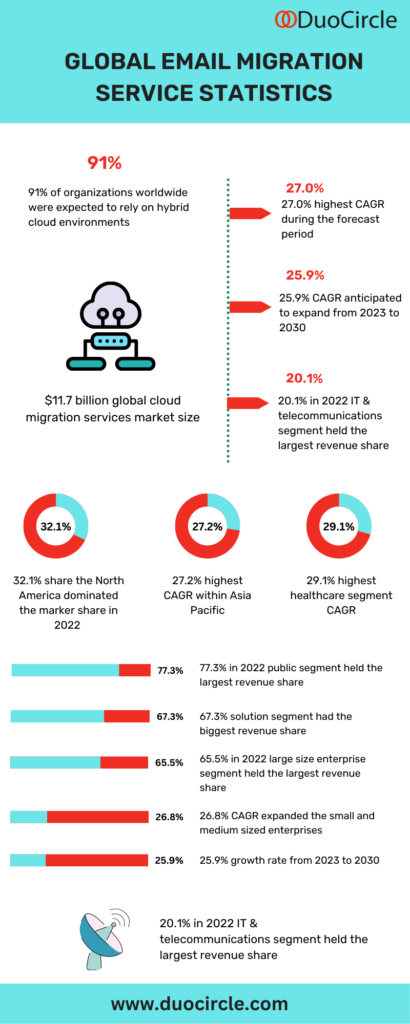The problem with tenant-to-tenant migration (T2T) migration is that it is incredibly complex and involves a multi-pronged process. Everything, including all your mailboxes, email instances, domains, and OneDrive accounts, need to be migrated from the source tenant to the destination one. Another major hurdle with the T2T migration is that you cannot expect a lot of help from Microsoft, as they don’t offer much support on it with native tools.
Let’s explore the issues and challenges during the Office 365 tenant-to-tenant migration, along with some tips to make it a hassle-free process. The most common problems and challenges that organizations encounter while undergoing an Office 365 migration are provided below.
Non-determination Of The Scope Of Migration
When it comes to Office T2T migration, one of the most prominent issues organizations face is the problems that arise due to the non-determination of the migration scope. It requires a comprehensive assessment of assets that need to be moved from the source tenant to the destination one.
The assets include everything from email accounts, OneDrive accounts, and instances. Often, the migration team prepares a list of assets. But that is wrong as a list of email accounts will also include inactive email accounts. The same kind of assessment needs to be done for other asset types. If the scope is not adequately defined, it will lead to the migration team spending a lot of time moving unnecessary data to the target environment. Hence, the team needs to develop a comprehensive list and only migrate the required assets to make the transition quick and straightforward.
Neglecting Data Integrity
Another challenge faced by migration teams is the complications raised due to not checking the source email data properly. Before migration, the team needs to carefully inspect the data to ensure that data integrity is not compromised.
Older versions of MS Exchange, like 2003 and 2007, have a 2Gb limit for the mailbox. Hence, when you migrate data from such sources, if it exceeds the 2Gb limit, it could lead to emails and attachments getting corrupted or causing issues during migration.
Forgetting The Basics
While the migration team focuses mainly on the migration’s technical elements, certain fundamental aspects are neglected. Instead of only thinking of how data should be migrated, the team should also focus on how the whole process affects the users.
Apart from determining the number of users, care should be taken regarding which groups of users need to be migrated and accomplishing it without disrupting the business processes. One of the common mistakes done is the migration of users based on departments. Not all users in a department will be carrying out independent tasks. There will be cross-department teams that work together for a project. Any interruption to critical services and processes can lead to frustration and incur top management’s wrath.
It is not required to migrate everything at once. There would be many assets, and moving everything will take a long time and much effort. It could hamper the business processes, and hence, it is recommended to move one or two weeks’ email data to get things going and gradually move the remaining after that.
Communication Failure
Another familiar mistake teams make during the T2T migration projects is a lack of effective user-communication. Many a time, it happens that when the migration is in process, the end-users are not aware of it. It might lead to missing important data that the users consider extremely sensitive and critical.
Another common issue or challenge with migration teams is the failure to orient the organization’s employees on fundamental aspects such as how the migration process is carried out and the sequence explaining which group will be moved first.
Finally, the migration teams don’t put a lot of emphasis on support required during the migration. Proper planning and creating FAQs or guidelines will help employees to understand the process and work accordingly.
Insufficient Planning For Co-Existence
In organizations having millions of records of email data and users, migration cannot be achieved overnight. Hence, migration teams need to plan to ensure that business processes are not affected during the migration. Your employees need to send emails, collaborate with others, and schedule meetings.
Hence, it is crucial to devise a plan to synchronize all email messages, calendars, and contacts in both the source and the target. It will ensure a smooth and hassle-free transition from one tenant to another.
No Plan B
Another common pitfall during the migration of tenants is not having an alternative plan or strategy if things go wrong. Every migration will not be smooth as one would expect. Hence, you always need to plan for a failure and overcome it in the quickest possible way. Not only do you need a plan, but you also need to strategize it to fix things quickly.
Many issues can occur, like migrating a set of users that should not be included in a particular migration phase or missing out on specific data. Even the whole migration process may end abruptly. Hence it would help if you were prepared to roll back the migration quickly. Or else, your business processes could take a huge hit.
Excessive Reliance On Native Tools
Many migration specialists discourage excessive reliance on native tools for migration. When it comes to tenant to tenant migration, there are not many tools available that will help you in migration.
While manual migration can take a lot of time and effort, some teams turn to PowerShell scripts to automate the tasks. Even scripting can become problematic if too many scripts are used and not appropriately versioned.
Hence, it is essential to properly plan the tools required for migrations and perform test runs with sample migrations before the actual one.
Multiple Active Directories (AD)
One of the major issues with Office 365 tenant-to-tenant migration is that most organizations have both an on-premises AD (Active directory) and Azure AD. In most cases, the on-premises AD is considered the primary source, and the data is subsequently synced with Azure AD. It could create trouble during azure tenant migration. Hence, special attention is required towards such matters for a hassle-free migration.
Tips And Best Practices For Office 365 Tenant-To-Tenant Migration
It’s clear from the above discussion that issues are many during a T2T migration. Hence, the migration team is expected to follow certain best practices, as listed below, for a successful migration.
- Firstly, finalize the source and destination tenants.
- Determine the complete scope of the migration process.
- Think through compliance and licensing issues before migration.
- Prepare an effective co-existence plan at the start.
- Communicate, train, and make every key stakeholder understand the migration process.
- Backup all existing environments involved.
- Prepare a comprehensive inventory of assets that need to be migrated.
- Migrate only the required data and leave the rest.
- Prepare an alternate plan to roll back things quickly to apply in case things go wrong.
- Provide the needed support team to end-users to clarify their queries before, after, and during the migration process.
- Ensure data security before, during, and after the migration.
- Ensure everything is migrated right from data to rules and permissions.
As the famous saying goes, “Planning is the blueprint for prosperity,” and it applies to everything, including the tenant-to-tenant migration process. The migration team must be well aware of the share of problems they could encounter in advance and hold fast to best practices throughout the process. They should also conduct detailed meetings with all key stakeholders involved, including end-users, system admins, and database admins, and finalize a fail-proof process carefully.


